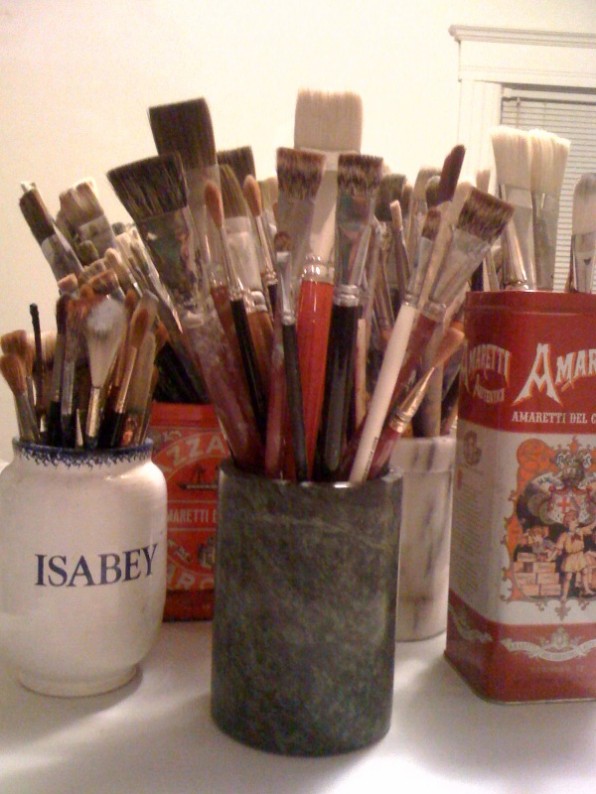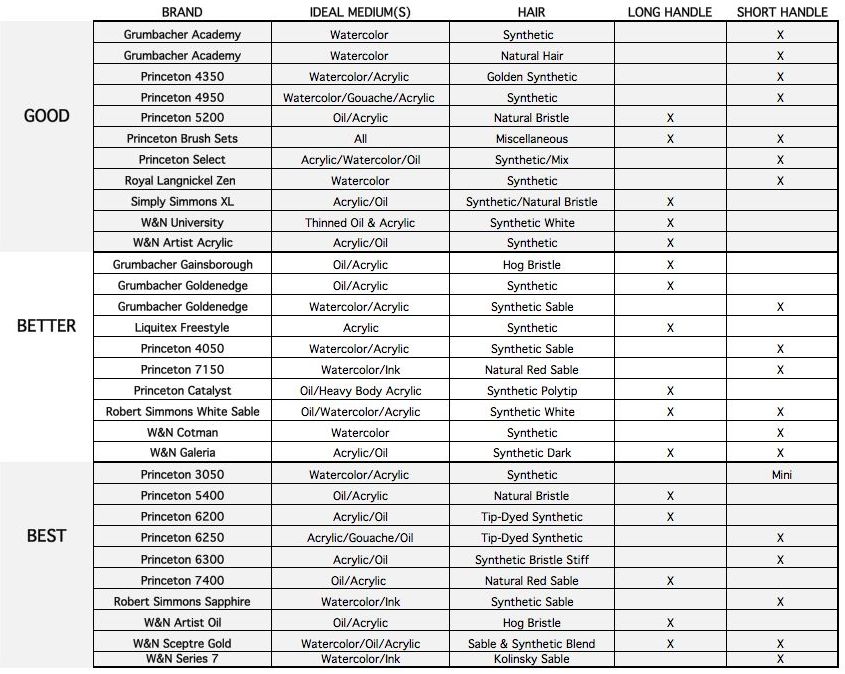 Brushes are an artist’s most important tool. They can help you achieve more precise line work or give you better control over the amount of paint applied to your painting surface. Although various types of brushes are recommended for specific mediums, it’s all about finding a brush that adapts to your style of painting and your personality.
Brushes are an artist’s most important tool. They can help you achieve more precise line work or give you better control over the amount of paint applied to your painting surface. Although various types of brushes are recommended for specific mediums, it’s all about finding a brush that adapts to your style of painting and your personality.
Brush Buying Tips:
Brushes are best bought in-store. There is no standardization for brush sizes. One manufacturer's Round #2 may be substantially smaller or larger than another brand's same brush. Even within a brand physical size can vary between brush head styles, regardless of what size is printed on the handle; a #0 brush is not always smaller than a #3. It always best to see a brush and hold it in your hand before purchasing.
Higher-end brushes live longer, are more elastic and will remember their original shape. They will keep performing like new if they are well taken care of and stored properly.
Keep in mind the shape of the brush is the mark you will be leaving on the surface you are working on. Choose a round brush for thin or pointed strokes and a flat brush will deliver a stroke with sharp, clean edges. Brushes with different qualities can broaden your options and help you bring your piece of work to life.
Different types of paints have different viscosity levels and drying times. Oils take the longest to dry so you can use a thick bristle brush that can hold onto more paint without having to come back to your palette as often. You can use the same kind of brush with acrylics if you are mixing in a retarder medium, otherwise the acrylic dries fast and may clog your brush. Stiffer brushes are designed to move thick loads of color or heavy body mediums. Soft and thinner brushes, like sables, are great for working with low viscosity mediums like watercolor or inks, and they also work well for detailing in any other medium.
Natural hair brushes tend to hold onto paint better than most synthetics. Because they are more absorbent than synthetic brushes, they are excellent for watercolor work.
Synthetic brushes are made of either nylon or polyester filaments and, in some cases, a combination of these and natural hair. They come in all sizes and shapes and can be used with any media. Synthetic hair brushes are generally recommended when working with acrylic paints.
Long handle brushes are typically used with oils and acrylic to give you a distance of perspective when painting upright, whereas watercolor brushes tend to have short handles due to the horizontal positioning of your surface.
Cleaning your brushes keeps them healthy and helps them live longer. Don’t let your favorite brush lose its original feel! Make sure to clean the bristles or hairs right after you use them, otherwise they can get clogged and lose their shape. Make sure your brushes are dry before storing them and never leave them resting on their bristles or the shape can get ruined.
So whether you just want to try new brushes, find a new favorite, or keep a variety of sizes to accommodate your work, we have something to fit your individual needs. If you have any questions about a brushes' performance, contact our knowledgeable staff at FLAX.

In our Oakland store we also carry the BEST brands of Escoda and Raphael:
Escoda Clasico - Oil & Acrylic - Premium White Hog Bristle - long handle
Escoda Prado - Watercolor & Acrylic - Synthetic that mimics the performance of sable hair - short handle
Raphael SoftAqua - Watercolor - Synthetic fibers with excellent retention - short handle

